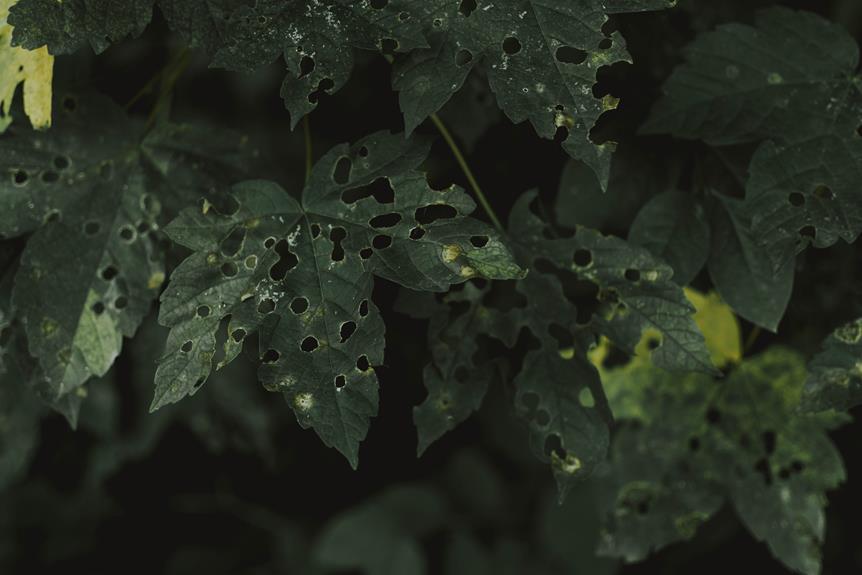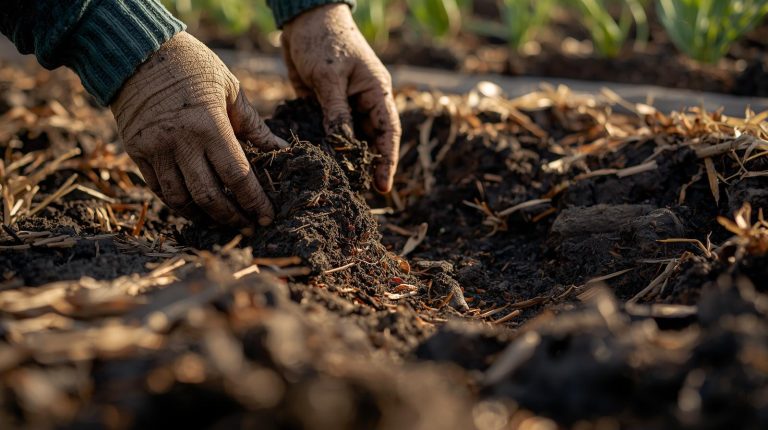Just as Achilles had his heel, your indoor garden has its vulnerabilities to diseases. But don’t worry, you’re not alone in this. Together, we can tackle these common indoor garden diseases using natural remedies that fortify your plants while fostering a sense of community among fellow gardeners.
You’ll find that a simple concoction of apple cider vinegar and water can work miracles against fungal foes, while baking soda becomes your ally in preventing unwanted outbreaks. Embrace the camaraderie in sharing tips like using hydrogen peroxide for root health or neem oil to ward off pests.
Your indoor oasis can thrive with these eco-friendly solutions, and you’ll be part of a collective effort to grow healthier, happier plants naturally.
Identifying Indoor Plant Diseases
Before you can tackle any disease in your indoor garden, it’s crucial to recognize the symptoms that your plants are displaying.
As a member of the indoor gardening community, you’re well aware that plant diseases often manifest as discolored leaf spots or the telltale signs of powdery mildew. These symptoms are typically caused by fungal pathogens thriving in overly moist conditions.
You might notice a dusty, white coating on leaves indicative of powdery mildew, or circular brown or black patches that are symptomatic of leaf spots.
Paying close attention to these signs is your first line of defense. Remember, early detection is key. By accurately identifying these issues, you empower yourself to take swift, effective action, ensuring the continued health and vitality of your cherished green companions.
Apple Cider Vinegar Applications
You’ll find that apple cider vinegar treatment is a potential in combating fungal invaders in your indoor garden. As a member of the community dedicated to nurturing plants within the sanctuary of your home, you understand the importance of safe, natural remedies. Apple cider vinegar applications offer just that.
- Eradicate powdery mildew, restoring the health of your foliage.
- Banish the dreaded black spot with a few spritzes, joining forces with fellow gardeners who swear by this method.
- Halt rust in its tracks, protecting your plants’ vital functions.
- Prevent future outbreaks, fostering a thriving, disease-resistant indoor oasis.
Mix 2 tbsp of apple cider vinegar with 2 quarts of water and spray your afflicted plants. Repeat this home remedy until you reclaim your green haven from those pesky fungi.
Baking Soda Mixture Recipe
Why not turn to your kitchen pantry for a simple yet effective fungal disease remedy for your indoor plants? Baking soda, a common household item, can be transformed into a homemade pesticide with ease.
By mixing 1 tablespoon of baking soda with the same amount of vegetable oil in a gallon of water, you create a potent solution. The addition of a liquid biodegradable soap is crucial, as it acts as a surfactant, ensuring your spray evenly coats the foliage.
Pour this blend into a spray bottle and apply it to the infected areas, paying special attention to the undersides of leaves where pests and fungus often lurk. Regular application can serve as both a preventative and a control measure, safeguarding your verdant oasis.
Neem Oil Treatment Guide
While you’ve learned how baking soda can be a potent ally against fungal foes, it’s also crucial to explore how neem oil serves as a powerful organic solution to a broad spectrum of indoor garden ailments.
As a member of the indoor plants community, you understand the importance of maintaining a healthy environment for your green companions. Neem oil provides a way to treat plants with care, ensuring they remain part of your serene oasis.
- Neem oil disrupts the hormonal balance of pests, effectively eliminating them.
- It combats formidable adversaries such as whitefly and spider mites.
- Repelling insects, neem oil protects your indoor plants with its potent aroma.
- Regular application every two weeks can prevent and treat a multitude of plant diseases, safeguarding your indoor garden’s vitality.
Preventative Measures and Tips
Implementing preventative measures in your indoor garden, such as routine neem oil applications, can significantly reduce the occurrence of diseases and pest infestations. Establishing a regimen that includes natural remedies will help prevent the spread of pathogens.
Utilize apple cider vinegar, baking soda, and hydrogen peroxide as part of your plant care arsenal. Be vigilant in maintaining plant hygiene; regularly remove dead foliage and debris to minimize disease proliferation.
Adequate plant spacing is crucial for enhancing air circulation, thereby lowering pest attraction. Additionally, be mindful of excess water, as it can foster fungal growth. Employ physical barriers to shield your green oasis from external pests.
Each step you take fortifies your garden’s resilience, fostering a sense of community among fellow indoor gardening enthusiasts.
Conclusion
In your quest to vanquish indoor plant ailments, you’ve harnessed ancient alchemy and modern botany alike. With apple cider vinegar as your rusted sword against fungi, baking soda concoctions as your shield, and neem oil as the arrow in your quiver, your garden is well-armored.
Remember, prevention is the mage’s best spell—regular monitoring and these natural elixirs will keep your leafy realm thriving. Embrace these solutions, and your indoor garden will blossom in harmonious health.




